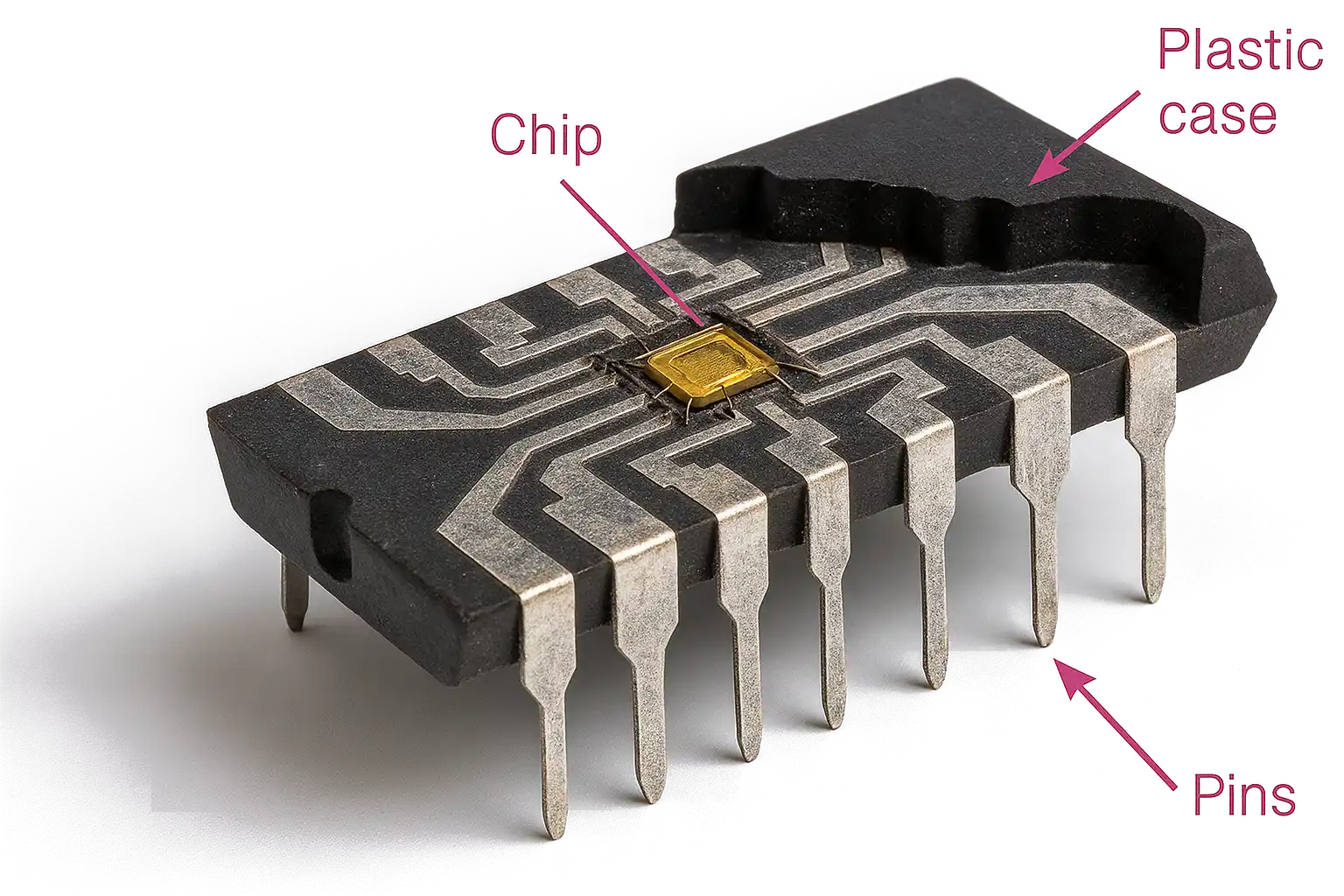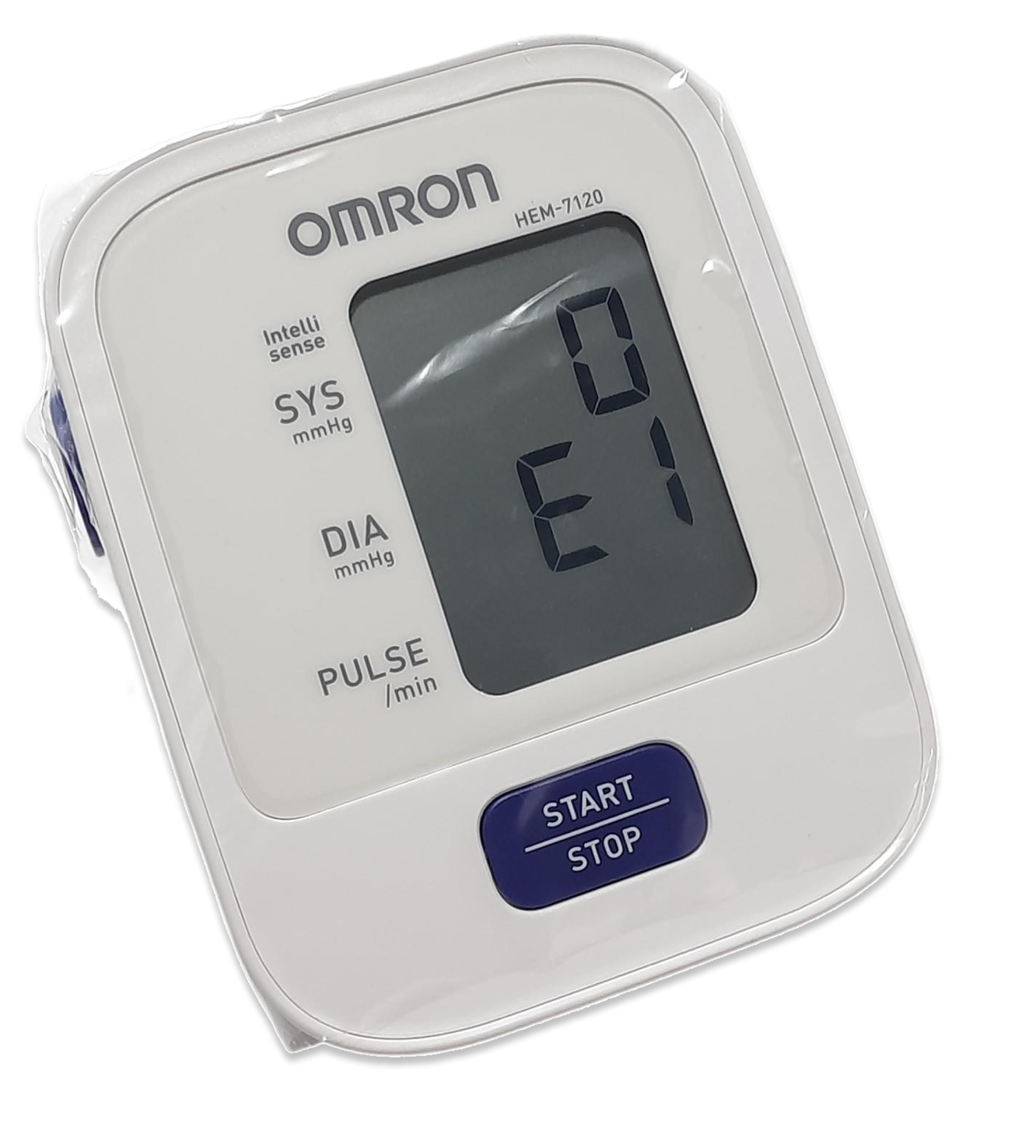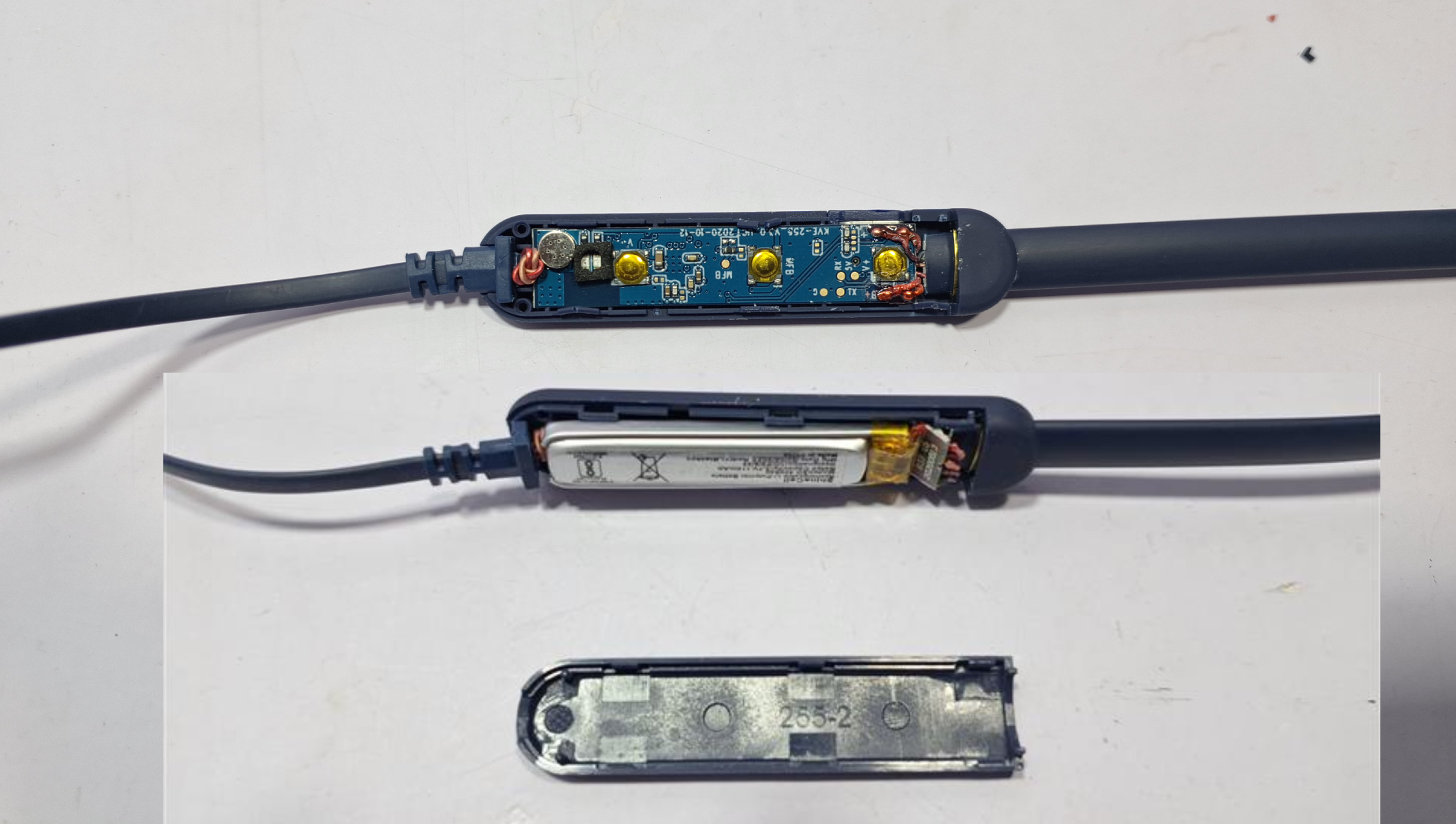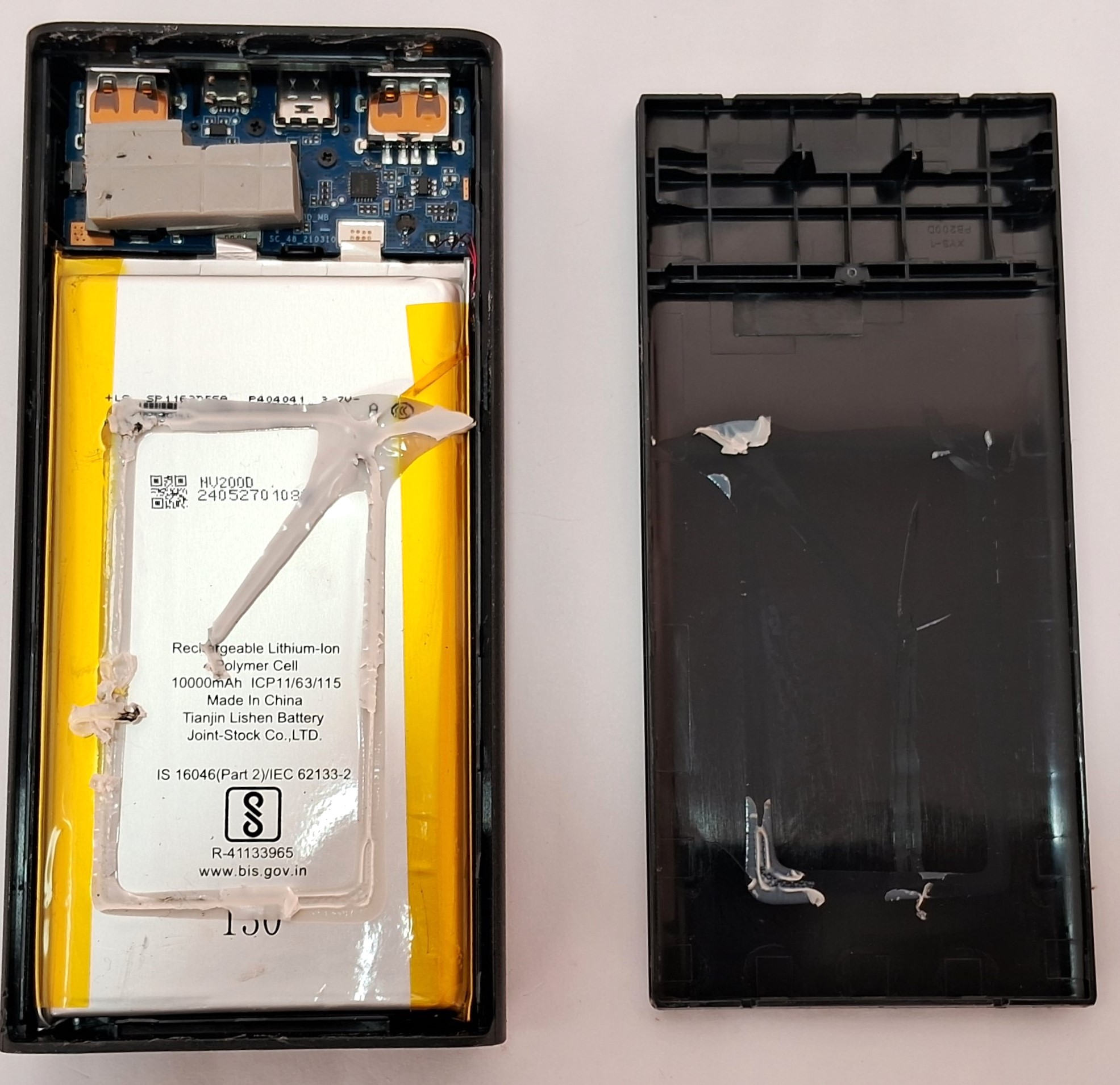
Mi PowerBank 3i Teardown and Costing
Disclaimer
This study was conducted entirely in-house by ASI Engineering to demonstrate the capabilities of the xcPEP® platform. The product was independently procured by ASI. No proprietary or confidential information from any other party has been used. Results are not updated after publishing.
Software platforms used for this study
This study is powered by ASI’s proprietary should-costing ecosystem - xcPEP and xcPROC - engineered to deliver real-world accurate, traceable should-costing across mechanical, electrical, and electronics components..

xcPEP delivers real-world accurate, transparent & defensible should cost analysis of mechanical, electrical & electronics components from drawings or physical parts.
Explore xcPEP →
xcPROC is the centralized database engine powering xcPEP. Built entirely by ASI’s data research team, each database is meticulously curated to be region-specific and time-specific.
Explore xcPROC →Teardown and Should Costing of Mi Power Bank 3i
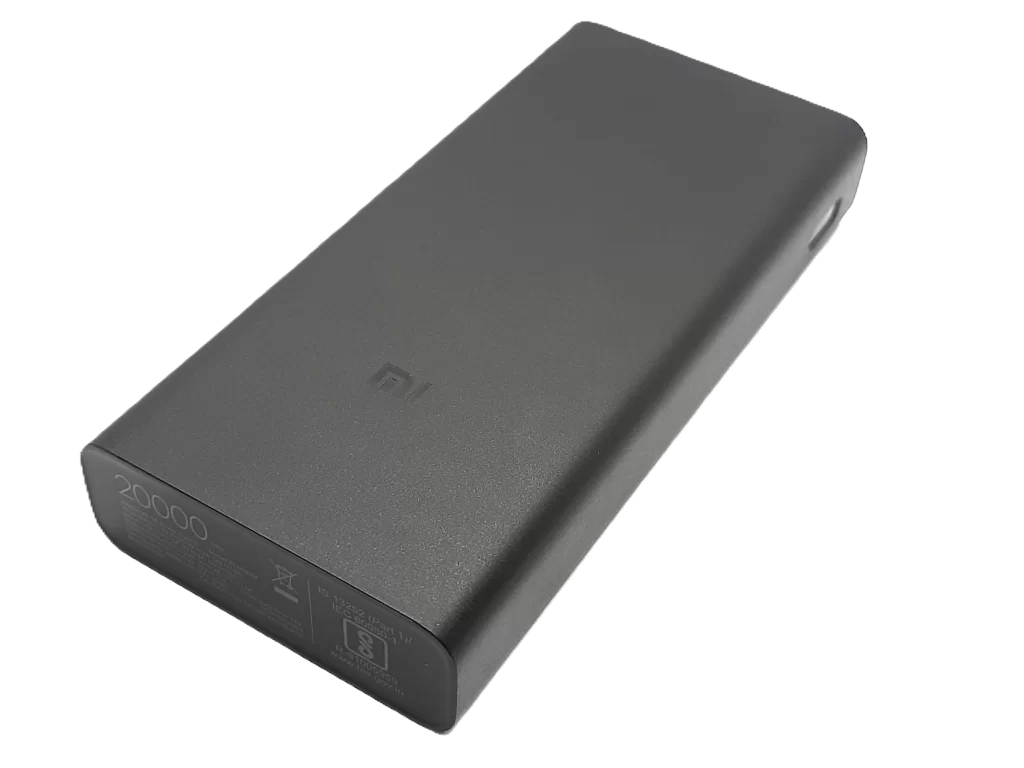
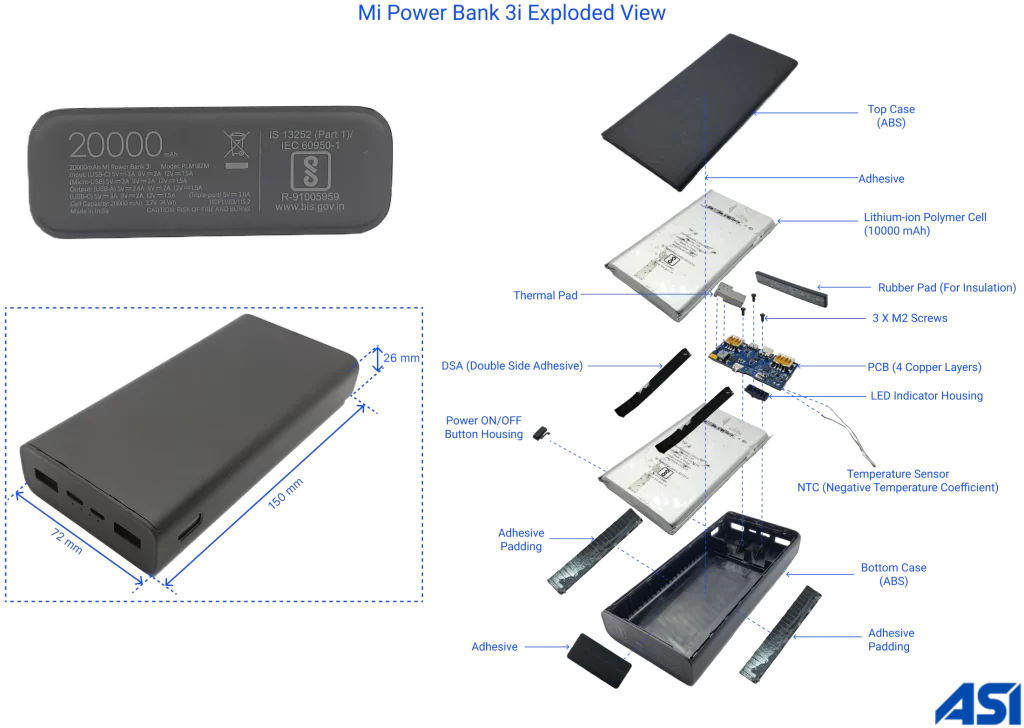
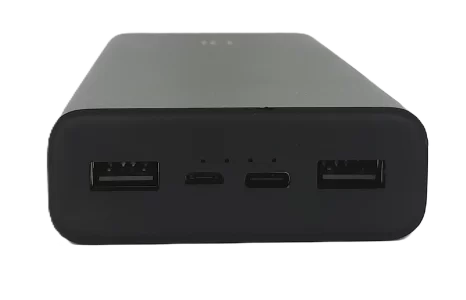
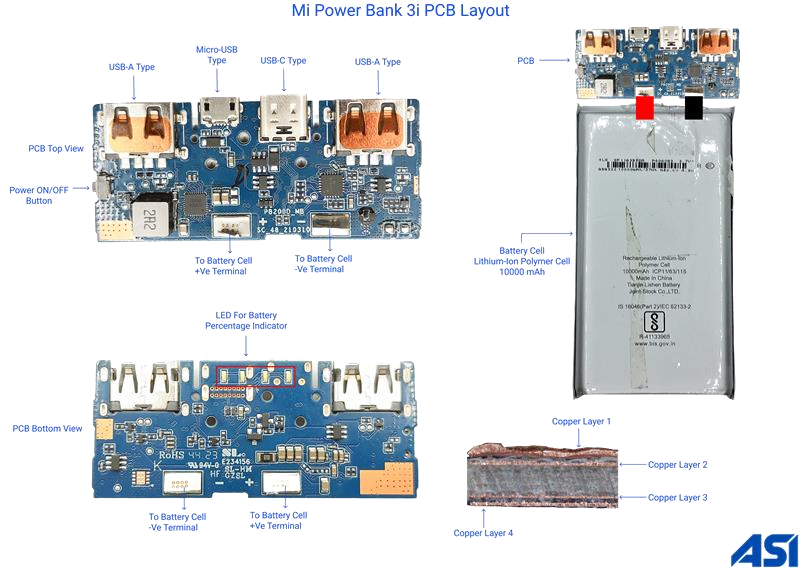
Prominent Features of Mi Power Bank 3i
Battery Cell in a Power Bank
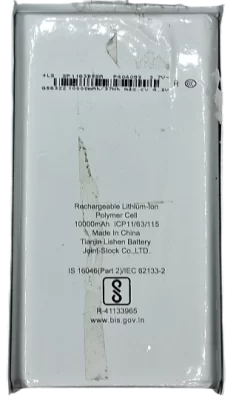
Type:
Lithium-ion Polymer (High Density Batteries). The cells are rechargeable.
Capacity per Cell:
Each cell has a capacity of 10000 mAh and two cells are sandwiched to get 20000 mAh capacity
Configuration:
2P (Two cells in Parallel configuration). The cells are sandwiched together inside the power bank
Safety Features:
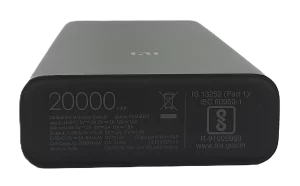
- Built-in over-charge
- Over-discharge
- Thermal protection
Power Bank Circuit Protection Features
- Over-current Protection
- Over-charge and Over-discharge Protection
- Short Circuit Protection
- Temperature Protection
- Reset mechanism for power recovery in abnormal conditions
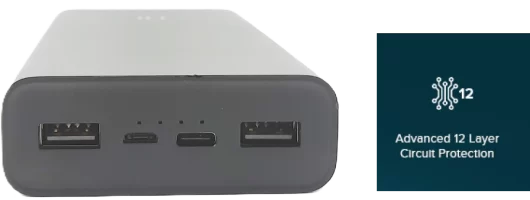
Charging Technology used in Power Bank
Fast Charging:
Dual Input Ports:
Micro-USB and USB-C inputs for versatile charging
Dual Output Ports:
Two USB-A and one USB-C output ports supporting simultaneous charging.
Trickle Charging Mode:
Dedicated mode for low-power devices such as smartwatches and Bluetooth earbuds
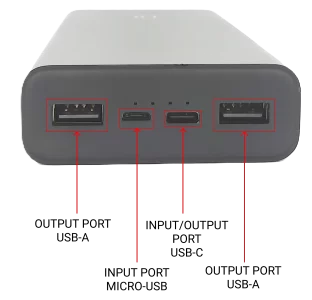

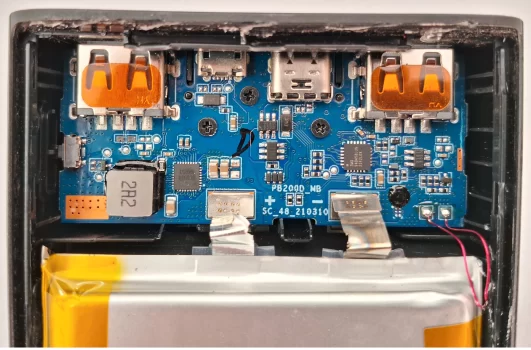
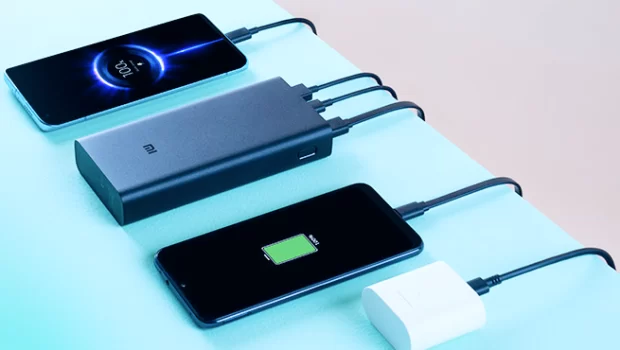
Mi Power Bank 3i Enclosure Design
Our teardown of the Mi Power Bank 3i reveals its meticulous internal design, highlighting high-quality components and advanced safety mechanisms. The Mi Power Bank 3i features a durable ABS plastic enclosure with a sleek matte finish for heat resistance and scratch protection. The components are securely assembled using Adhesive Padding and DSA (Double-Side Adhesive) for enhanced durability and a compact, seamless design ensures easy portability for on-the-go convenience.
Housing Material of Power Bank:
High-strength ABS (Acrylonitrile Butadiene Styrene) plastic for durability and heat resistance
Feel and Finish of Power Bank:
Matte finish for a premium feel and scratch resistance
Power Bank Dimensions and Weight:
150 x 72 x 26 mm, compact for portability and lightweight approximately 508 grams
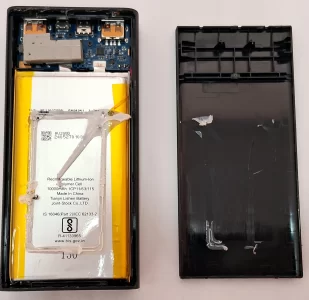
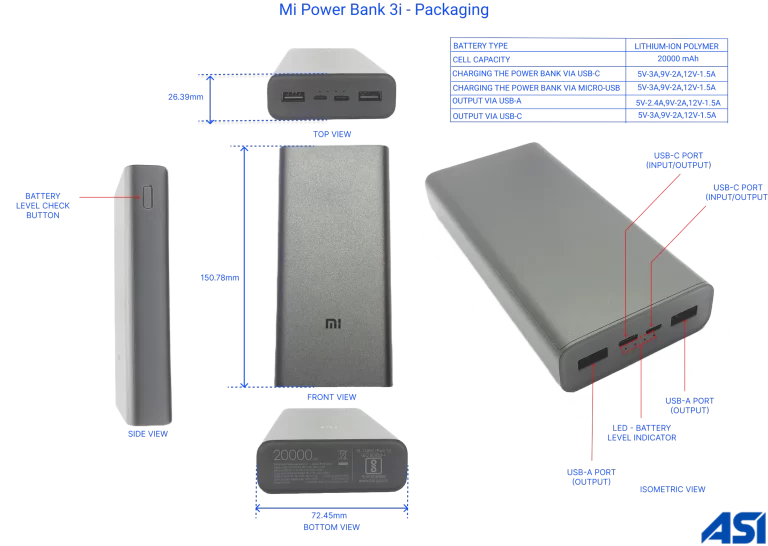
Bill of Materials (BOM) of Power Bank
We conducted a detailed teardown of the Mi Power Bank 20000mAh to study its components and system architecture. This teardown study involved analyzing data related to various part attributes, enabling a comprehensive understanding of its design and functionality.
Multi-level BOM (Bill of Materials) Structure of Power Bank
Summary of Assemblies and Components
The BOM (Bill of Materials) structure for the Mi Power Bank 20000mAh, with the number of assemblies and their child components, is summarized in the table below:

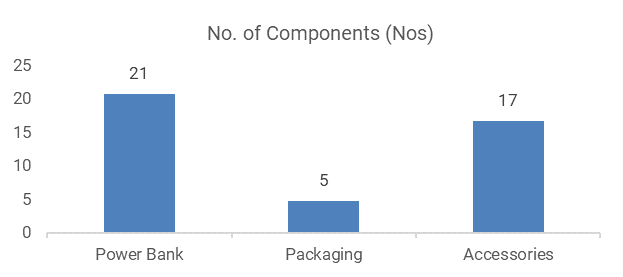
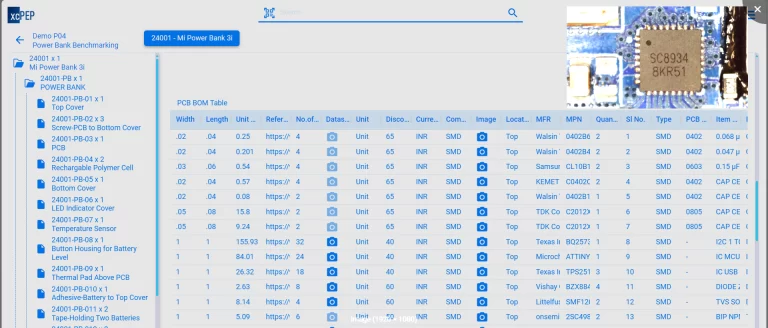
Above image is of xcPEP BOM (Bill of Material) page view
Power Bank Teardown and Detailed BOM (Bill of Materials) Analysis
- Total Assemblies and Components
After teardown, 3 assemblies and 43 components were identified in the Mi Power Bank 20000mAh.
- Component Parameters:
Additionally, 40 BOM (Bill of Materials) parameters such as weight, dimensions, material type, electrical specifications, and thermal properties were mapped. On average, 20 parameters per part were recorded, depending on the complexity of the component.
Power Bank Weight Distribution Analysis
Weight Distribution Overview
Total Weight and Assembly Breakdown
Power Bank: 85.86% (436 grams)
Packaging:12.18% (62 grams)
Accessories: 1.96% (10 grams)
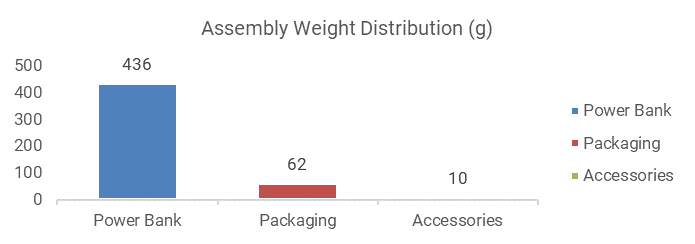
Teardown and Weight Contribution Insights
Major Components Weight Contribution
- Rechargeable Polymer Cell: 73% (339.99 grams)
- Bottom Cover: 10% (45.27 grams)
- Packaging (Inner Box and Outer): 12.3% (57.4 grams)
- Top Cover: 4.7% (22.09 grams)
Power Bank Weight Pareto Analysis
Pareto Analysis of Component Weight
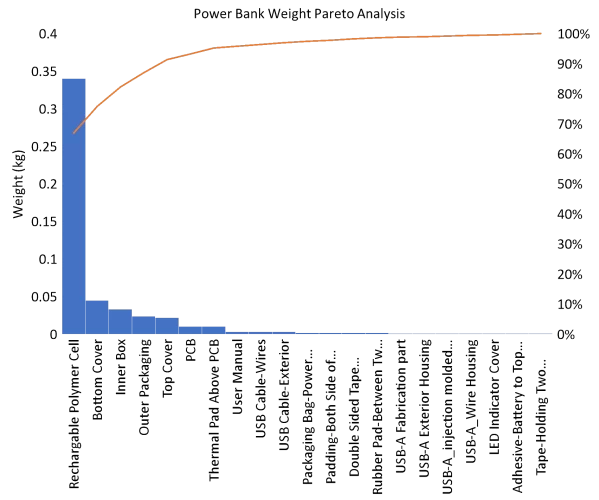
Weight Pareto Insights from Teardown and Benchmarking of Power Bank
- The Rechargeable Polymer Cell is the heaviest component, weighing 339.99 grams (73% of the total weight).
- The Bottom Cover contributes 45.27 grams (10% of the total weight).
- Packaging materials (Inner Box and Outer Packaging) together weigh 57.4 grams (12.3% of total weight).
- The Top Cover is lightweight yet durable, weighing 22.09 grams (4.7% of total weight).
Power Bank Manufacturing Category Distribution Analysis
Analysis of Manufacturing Categories
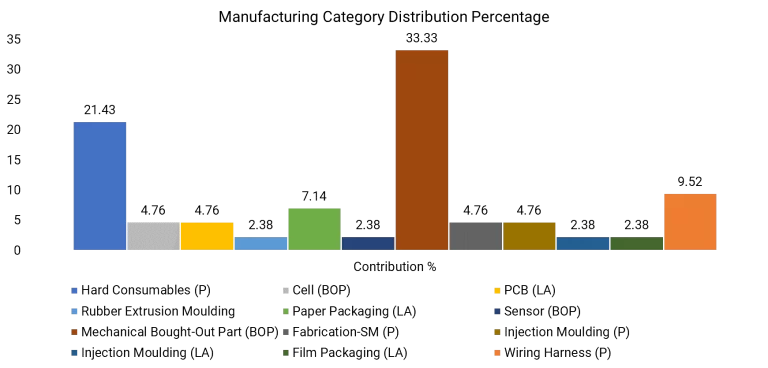
Overview of Manufacturing Category Distribution:
- Mechanical Bought-Out Part (BOP): 33.33%
Includes outsourced mechanical components essential for functionality. - Hard Consumables: 21.43%
Covers adhesive pads, DSAs, and other consumable components. - Wiring Harness: 9.52%
Essential for power distribution and communication. - Paper Packaging: 7.14%
- Cell and PCB: 4.76%
- Fabrication and Moulding: 12.9%
By integrating teardown insights, detailed analysis, and benchmarking observations, this comprehensive study underscores the Mi Power Bank 3i's optimized design and functionality.
Should Costing Analysis of Mi Power Bank 3i
Detailed Should Costing Breakdown
We recently purchased the Mi 20000 mAh power bank for ₹1,609, while it is currently listed on the Mi website for ₹1,891. Our estimated should-cost for the product is ₹1,436. Additionally, the same power bank was exported from India to Bhutan at ₹1,571 in the month of March 2024.
A detailed Should Costing of Mi Power Bank 3i was performed and the following are the outcomes of the study. The manufacturing cost of the power bank was found to be 1,436 INR and the following were the consideration for the study.
- The Power Bank was manufactured in Bangalore, India
- The volumes considered for the activity were 50,000 annually
- The latest Material rates and rates required for MHR calculations were taken for Q3 FY24-25
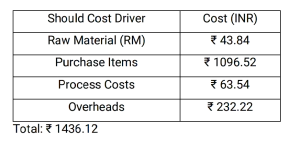

Should Costing on xcPEP Platform:
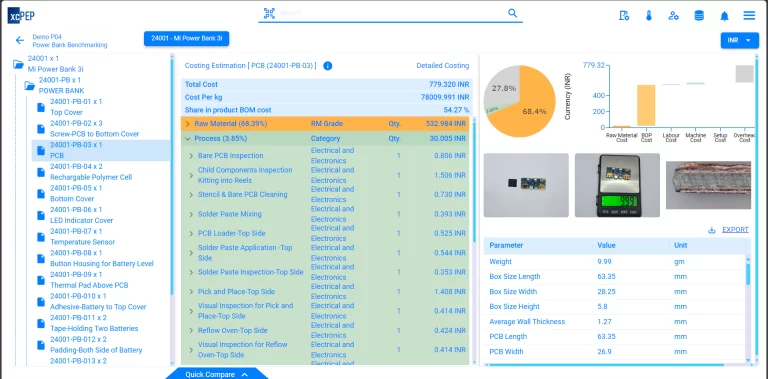
The above image shows should cost of PCB in xcPEP software
Power Bank Should Cost Breakdown
The total should-cost is distributed across the following assemblies:
- Power Bank: 95.94% of total cost (INR 1377.88).
- Packaging: 0.86% (INR 12.15).
- Accessories: 3.20% (INR 46.09).
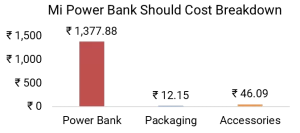
Power Bank Should Cost Pareto Analysis
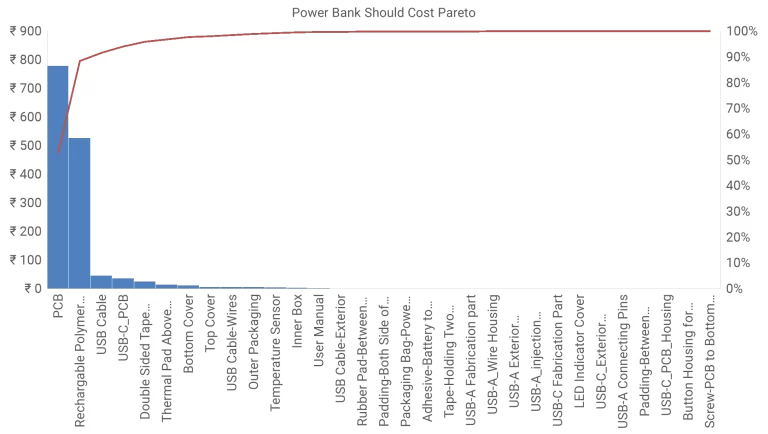
Key Observations from the Power Bank Should Cost Pareto:
Based on the detailed breakdown of component should cost, following observations are made:
1. Power Bank PCB
- The PCB contributes ₹779.32, accounting for 54% of the total cost. Its dominance in the should-cost breakdown highlights it as a critical focus area for cost optimization.
2. Rechargeable Polymer Cell Dominance
- The Rechargeable Polymer Cell accounts for the highest cost at ₹527.09, making up 73% of the overall power bank cost.
- Its weight and cost contribution highlight its role as a critical driver in the should costing process.
3. USB Cable
- The USB Cable, with a cost of ₹46.09, represents 6.4% of the total cost, making it the second most expensive component in the analysis.
Observations from Should Costing of Mi Power Bank 3i:
Based on the detailed breakdown of component should cost, following observations are made:
1. Power Bank PCB
- The top three components (PCB, Rechargeable Polymer Cell, and USB Cable) represent over 93% of the total cost, making them the primary focus for cost-saving measures.
- Addressing these critical areas can provide substantial cost reductions, improving the overall profitability of the power bank.

